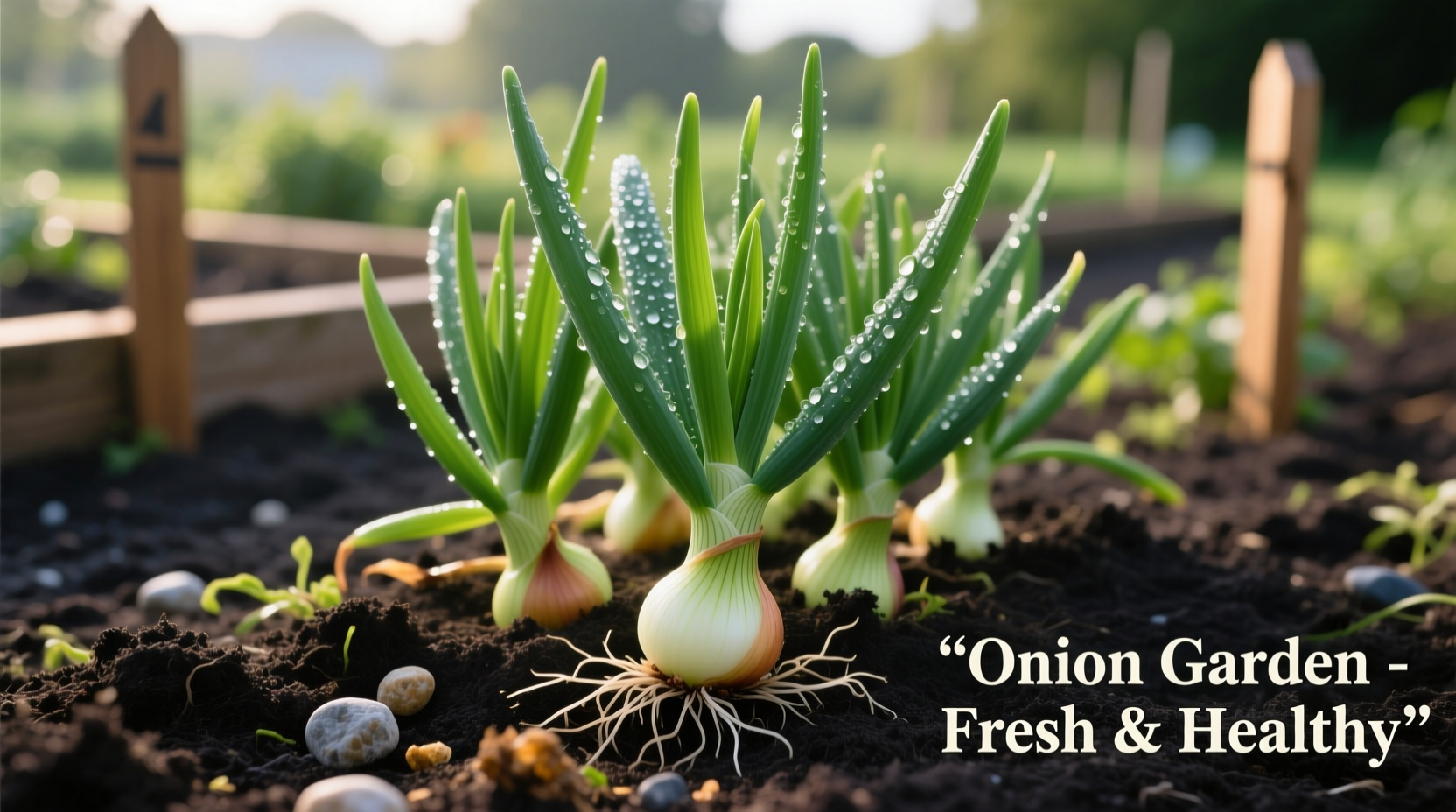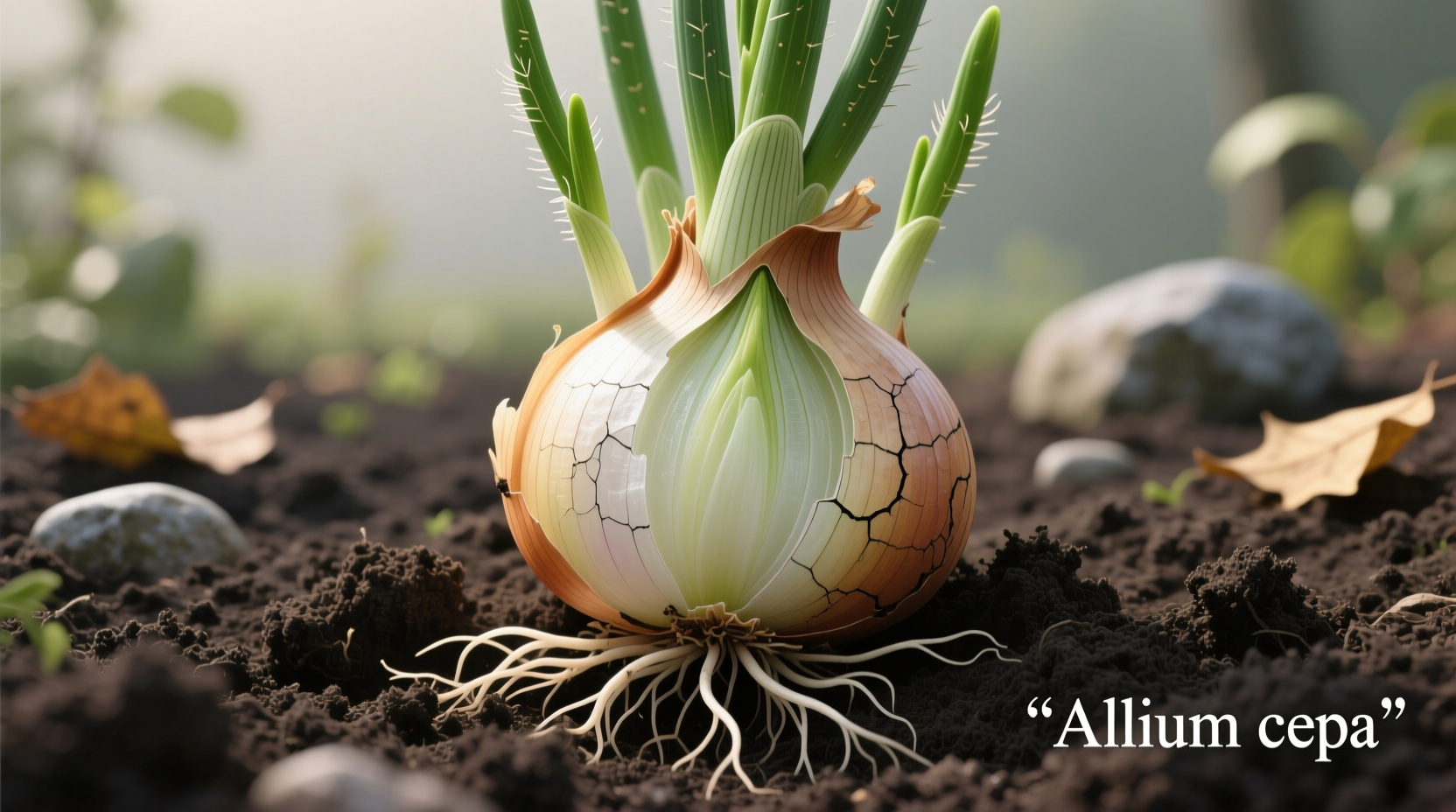Planning Your Onion Bulb Planting Success
Understanding the fundamentals of onion bulb cultivation sets the foundation for a bountiful harvest. Onion bulb plants (Allium cepa) thrive in specific conditions that vary by climate zone and variety. Whether you're a beginner gardener or expanding your vegetable patch, proper planning prevents common pitfalls that lead to small bulbs or premature bolting.
Onion varieties fall into three main categories based on daylight requirements, which directly impacts when you should plant them in your region. Short-day onions (10-12 hours of daylight) work best in southern regions, intermediate-day onions (12-14 hours) suit mid-latitude areas, and long-day onions (14+ hours) perform optimally in northern climates. Planting the wrong variety for your location results in poor bulb development.
| Onion Variety Type | Daylight Requirement | Best Planting Regions | Harvest Timeframe |
|---|---|---|---|
| Short-Day Onions | 10-12 hours | Zone 7 and south (southern US) | Late spring to early summer |
| Intermediate-Day Onions | 12-14 hours | Zones 5-7 (central US) | Mid to late summer |
| Long-Day Onions | 14+ hours | Zones 3-5 (northern US, Canada) | Late summer to early fall |
This critical distinction explains why gardeners in Florida might struggle with varieties that thrive in Maine. The USDA Plant Hardiness Zone Map provides essential guidance for selecting appropriate varieties in your specific location (USDA Agricultural Research Service).
Step-by-Step Planting Process for Healthy Bulbs
Successful onion bulb planting follows a precise sequence that maximizes root development and bulb formation. Start with soil preparation 2-3 weeks before planting to allow amendments to integrate properly.
Choose a location with full sun exposure (at least 6-8 hours daily) and prepare soil with these specifications:
- Soil pH between 6.0-7.0 (slightly acidic to neutral)
- Loose, well-draining soil amended with 2-4 inches of compost
- Avoid nitrogen-rich fertilizers before planting which encourage leaf growth over bulb development
When planting onion sets (small bulbs), follow these depth and spacing guidelines:
- Plant bulbs 1-2 inches deep with pointed end up
- Space bulbs 4-6 inches apart in rows 12-18 inches apart
- Cover with soil and water gently but thoroughly
- Apply 2-inch layer of mulch to retain moisture and suppress weeds

Essential Care Practices Throughout the Growing Season
Consistent care determines whether your onion bulb plants develop into robust, flavorful bulbs or remain small and underdeveloped. Water management proves most critical during bulb formation stage, typically 4-6 weeks after planting when the plant shifts energy from leaf growth to bulb development.
Follow this watering timeline for optimal results:
- First 2 weeks: Water daily to establish roots (0.5 inch per day)
- Weeks 3-6: Water every 2-3 days (1 inch total per week)
- Bulb formation stage: Water deeply 2-3 times weekly (1.5 inches total)
- Final 2 weeks before harvest: Gradually reduce watering
Overwatering causes rot and disease, while underwatering results in small, pungent bulbs. The University of California Cooperative Extension confirms that inconsistent moisture ranks among the top reasons for poor onion bulb development in home gardens (UC Agriculture and Natural Resources).
Harvesting and Curing for Maximum Storage Life
Timing your onion harvest correctly ensures maximum flavor development and storage potential. Watch for these natural indicators that bulbs are ready for harvest:
- Top leaves begin to yellow and fall over naturally
- Neck of the bulb becomes soft and begins to collapse
- Outer skin turns dry and papery
Follow this professional harvesting process:
- Lift bulbs carefully with a garden fork when tops have fallen
- Cure bulbs in a warm, dry, well-ventilated area for 2-3 weeks
- Trim roots to 1 inch and tops to 1-2 inches after curing
- Store in mesh bags in a cool, dry, dark location (32-40°F)
Properly cured onions can store for 6-8 months under ideal conditions. The Royal Horticultural Society notes that improper curing accounts for 70% of storage failures in home-grown onions (RHS Gardening).
Troubleshooting Common Onion Bulb Problems
Even with proper care, onion bulb plants may encounter challenges. Recognizing these issues early prevents total crop loss:
Premature Bolting (Flowering): Caused by temperature fluctuations or planting bulbs too early. Once bolting occurs, the bulb stops growing. Harvest immediately as these onions won't store well.
Small Bulb Size: Typically results from overcrowding, poor soil nutrition, or incorrect variety selection for your daylight zone. Space plants properly and choose varieties suited to your region.
Rotting Bulbs: Usually indicates overwatering or poor drainage. Amend soil with compost and sand before planting next season. The Cornell University Gardening Resources identifies drainage issues as the leading cause of onion bulb rot (Cornell Home Gardening).
Advanced Tips for Exceptional Onion Harvests
Seasoned gardeners employ these techniques to maximize onion bulb size and flavor:
- Apply potassium-rich fertilizer during bulb formation stage
- Remove flower stalks immediately if bolting occurs
- Use drip irrigation to maintain consistent soil moisture
- Rotate planting location annually to prevent disease buildup
- Plant companion crops like carrots or beets which don't compete for nutrients
Remember that onion bulb plants require patience—most varieties take 90-120 days from planting to harvest. Rushing the process by harvesting too early sacrifices both size and storage potential.
Frequently Asked Questions
Can I grow onion bulb plants in containers?
Yes, onion bulb plants grow well in containers with proper drainage. Use pots at least 8 inches deep with multiple drainage holes. Fill with high-quality potting mix amended with compost. Space bulbs 3-4 inches apart and water consistently, as container soil dries faster than garden soil.
Why are my onion bulbs not forming properly?
Poor bulb formation typically results from incorrect variety selection for your daylight zone, overcrowding, inconsistent watering during bulb formation, or excessive nitrogen fertilization. Ensure you're growing the appropriate variety for your region (short-day, intermediate-day, or long-day) and maintain consistent moisture during the critical 4-6 week bulb development stage.
How do I prevent onion bulb plants from bolting?
To prevent bolting, plant at the correct time for your climate (early spring or fall), choose varieties less prone to bolting, and avoid using sets larger than 1 inch in diameter. Temperature fluctuations trigger bolting, so mulching helps maintain consistent soil temperature. If bolting occurs, harvest immediately as these onions won't store well.
What's the difference between onion sets, seeds, and transplants?
Onion sets are small pre-grown bulbs (easiest for beginners), seeds offer the widest variety selection but require longer growing time, and transplants are young seedlings ready for planting. Sets produce faster harvests but have fewer variety options, while seeds allow for more specialized varieties but require 8-10 weeks of indoor growing before transplanting.
How long do harvested onion bulbs last in storage?
Properly cured and stored onion bulbs can last 6-8 months. Storage longevity depends on correct curing (2-3 weeks in warm, dry conditions), proper storage environment (32-40°F, 65-70% humidity), and variety selection. Sweet onions store for 1-2 months while storage varieties like Yellow Sweet Spanish can last 6+ months under ideal conditions.











 浙公网安备
33010002000092号
浙公网安备
33010002000092号 浙B2-20120091-4
浙B2-20120091-4